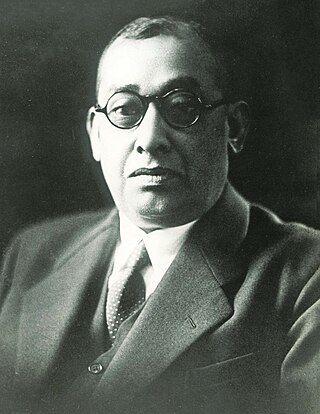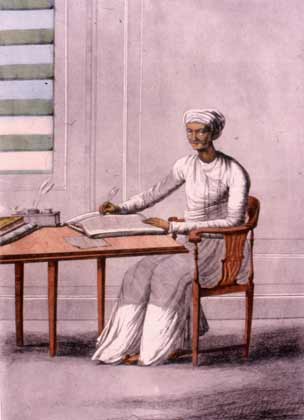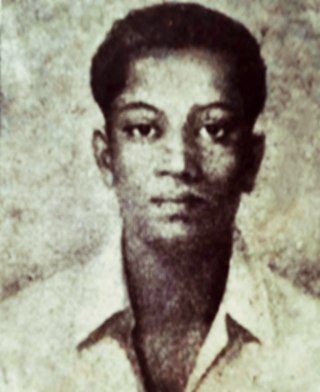
Bengal Volunteers Corps was an underground revolutionary group against the British rule of India. The group was functional from its inception in 1928 to the Indian independence.

Bengal Volunteers Corps was an underground revolutionary group against the British rule of India. The group was functional from its inception in 1928 to the Indian independence.
Subhas Chandra Bose organised a group of volunteers during the 1928 Kolkata session of Indian National Congress. [1] [2] [3] [4] The group was named Bengal Volunteers Corps and was under the leadership of Major Satya Gupta. Subhas Chandra Bose himself was the General officer commanding. [5] After the Calcutta session of the Congress was over, the Bengal Volunteers continued its activities, under the guidance of Gupta, [6] and was turned into an active revolutionary association. [7]
The Bengal Volunteers decided to launch 'Operation Freedom' in the early 1930s, primarily to protest against the police repression in different jails in Bengal. [8]

Subhas Chandra Bose was an Indian nationalist whose defiance of British authority in India made him a hero among many Indians, but his wartime alliances with Nazi Germany and Imperial Japan left a legacy vexed by authoritarianism, anti-Semitism, and military failure. The honorific 'Netaji' was first applied to Bose in Germany in early 1942—by the Indian soldiers of the Indische Legion and by the German and Indian officials in the Special Bureau for India in Berlin. It is now used throughout India.

Rash Behari Bose was an Indian revolutionary leader who fought against the British Empire. He was one of the key organisers of the Ghadar Mutiny and founded the Indian Independence League. Bose also led the Indian National Army (INA) which was formed in 1942 under Mohan Singh.

Bina Das was an Indian revolutionary and nationalist from West Bengal.

Anushilan Samiti was an Indian fitness club, which was actually used as an underground society for anti-British revolutionaries. In the first quarter of the 20th century it supported revolutionary violence as the means for ending British rule in India. The organisation arose from a conglomeration of local youth groups and gyms (akhara) in Bengal in 1902. It had two prominent, somewhat independent, arms in East and West Bengal, Dhaka Anushilan Samiti, and the Jugantar group.

Dinesh Chandra Gupta or Dinesh Gupta was an Indian revolutionary against British rule in India, who is noted for launching an attack on the Secretariat Building - the Writers' Building in the Dalhousie square in Calcutta, along with Badal Gupta and Benoy Basu.

Panchanan Chakravarti was a Bengali Indian revolutionary, one of the creators of the Revolt group after the momentary unification of the Anushilan Samiti and the Jugantar in the 1920s. Friend of the poet Kazi Nazrul Islam, he was a close associate of Subhas Chandra Bose.
Sengupta is a Bengali surname found among the Bengalis of West Bengal, Assam, Tripura and Bangladesh. They belong to the Baidya caste of Bengal. The surname is a compound of Sen and Gupta.

Bengali Kayastha, is a Bengali Hindu caste originated from the Bengal region of Indian subcontinent, and is one of the main subgroups of the Kayastha community. The historical caste occupation of Kayasthas throughout India has been that of scribes, administrators, ministers and record-keepers; the Kayasthas in Bengal, along with Brahmins and Baidyas, are regarded among the three traditional higher castes that comprise the "upper layer of Hindu society." During the British Raj, the Bhadraloks of Bengal were drawn primarily, but not exclusively, from these three castes, who continue to maintain a collective hegemony in West Bengal.
Leonard Abraham Gordon is a historian of South Asia, especially of Bengal, whose 1990 book Brothers Against the Raj: A Biography of Indian Nationalist Leaders Sarat and Subhas Chandra Bose is considered the definitive biography of Subhas Chandra Bose.
Srish Pal was a Bengali revolutionary, born in Mulbarga, Dacca, British India. His full name was Shrish Chandra Pal. He was attracted to revolutionary politics in 1905 with the guidance of Hemchandra Ghosh. He joined the Dhaka-based Mukti Sangha. Pal was a follower of Netaji Subhas Chandra Bose.
Pramod Ranjan Sengupta প্রমোদরঞ্জন সেনগুপ্ত was a Marxist intellectual and Bengali revolutionary, attached with of Indian National Army led by Netaji Subhas Chandra Bose.

Suniti Choudhury was an Indian nationalist who, along with Santi Ghose, assassinated a British district magistrate when she was 16 years old and is known for her participation in an armed revolutionary struggle.
Braja Bhusan Gupta (1869–1940) was a Bengali nationalist politician, lawyer and active participant of the Indian freedom struggle.

Kanailal Bhattacharjee was a Bengali revolutionary nationalist who fought against British rule over India.
Bela Mitra, née Bose was a Bengali revolutionary involved with the Jhansi Rani Regiment, the Women's Regiment of the Indian National Army, and a social worker.

Ram Krishna Roy was an Indian revolutionary and member of the Bengal Volunteers who carried out assassinations against British colonial officials in an attempt to secure Indian independence. He was hanged on 15 October 1934 for the charge of assassination of Magistrate Burge.
Prabhanshu Sekhar Pal nick named Jambu, was an Indian revolutionary and member of the Bengal Volunteers who carried out assassinations against British colonial officials in an attempt to secure Indian independence.

Bimal Dasgupta, nicknamed "Makhan", was an Indian revolutionary and member of the Bengal Volunteers who carried out assassinations against British colonial officials in an attempt to secure Indian independence.
Syed Alimuddin Ahmad, popularly known as Master Saheb, was a Bengali bodybuilder and wrestler. He participated in the anti-British independence movement as an underground activist and revolutionary, as a part of the Dhaka Mukti Sangha organisation. Ahmed rose to prominence after the organisation was absorbed into Subhas Chandra Bose's Bengal Volunteers during the mayorship of Chittaranjan Das in Calcutta.
The Chhatri Sangha was an Indian women's student organization. It recruited and trained women revolutionaries, organized study circles and gave lessons in cycling, driving and armed warfare. It functioned as the girls' faction of the All India Students' Federation.